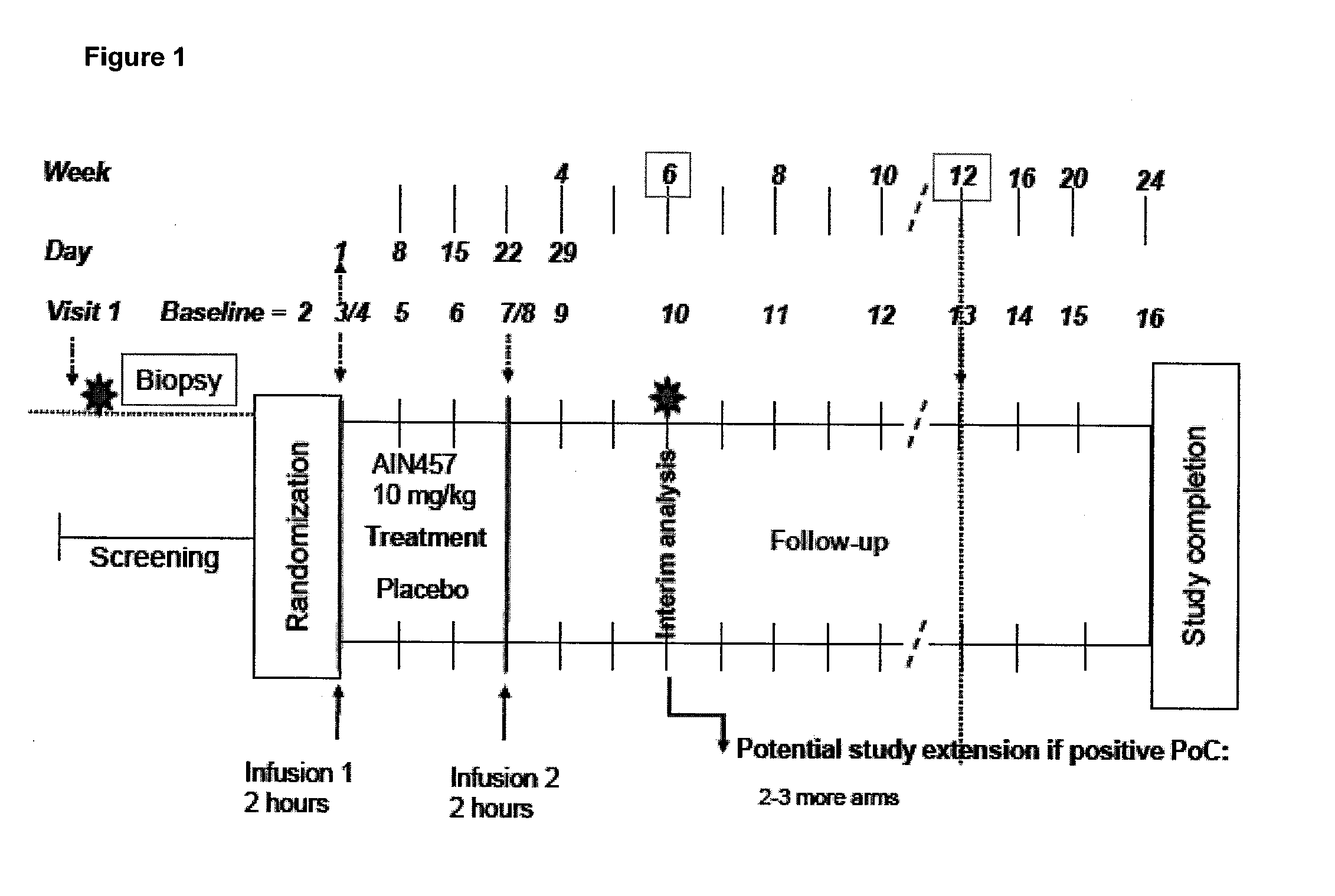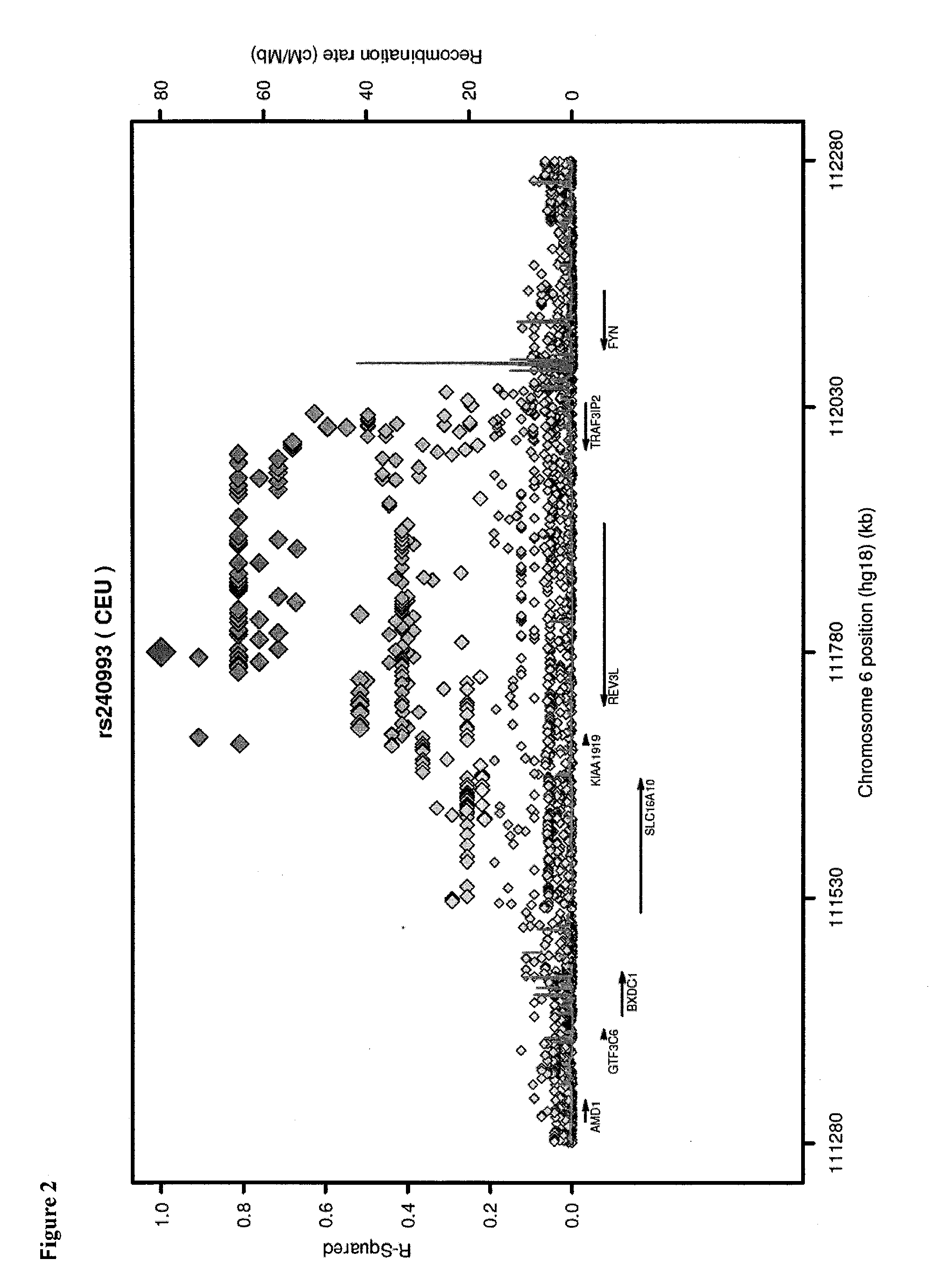Methods of treating psoriatic arthritis (PSA) using il-17 antagonists and psa response or non-response alleles
- Summary
- Abstract
- Description
- Claims
- Application Information
AI Technical Summary
Benefits of technology
Problems solved by technology
Method used
Image
Examples
example 1
Proof of Concept PSA Trial CAIN4572206
Example 1.1
Study Design CAIN4572206
[0193]This was a randomized, double-blind, placebo controlled, multi center proof of concept study of multiple doses (2 infusions 3 weeks apart) of 10 mg / kg AIN457 for the treatment of patients with a diagnosis of active PsA based on currently advocated classification criteria for clinical trials (CASPAR). A schematic of the trial is shown in FIG. 1. Patients with moderate to severe psoriatic arthritis fulfilling the following criteria were enrolled: (i) CASPAR criteria (Taylor Wet al (2006) Arthritis Rheum 54:2665-73) for a diagnosis of psoriatic arthritis; with the modification that swelling and tenderness of at least three peripheral joints, (ii) PGA ≧40, (iii) inflammatory pain ≧40; (iv) disease is inadequately controlled on least one DMARD given for at least three months at the maximum tolerated dose (v) RF ≧100 IU AND negative CCP ELISA test. Efficacy evaluations were based on the following qualified asse...
example 1.2
Secukinumab Improves Signs and Symptoms of Psoriatic Arthritis
[0233]CAIN4572206 assessed the safety and preliminary efficacy of secukinumab inhibiting Interleukin-17A, a novel target for the treatment of psoriatic arthritis (PsA). 42 patients with active PsA who fulfilled CASPAR criteria were randomized 2:1 to receive two injections of secukinumab (10 mg / kg) or placebo, given 3 weeks apart. The primary efficacy endpoint was the proportion of ACR20 responders at Week 6 in active versus placebo (one-sided p<0.01). 35 (83.3%) patients (25 on secukinumab, 10 on placebo) completed the study. 5 patients (4 secukinumab and 1 placebo) were excluded from the efficacy analysis due to protocol violations and 7 (3 secukinumab and 4 placebo) discontinued prematurely for lack of efficacy or withdrawal of consent. Demographics and baseline characteristics were balanced between groups including parameters: mean±SD SJC (secukinumab vs. placebo): 8.3±5.6 vs. 9.5±5.4; TJC 23.5±19.4 vs. 22.6±11.0; DAS2...
example 2
Materials and Method for Pharmacogenetic (PG) Analysis in Psoriatic Arthritis Trial CAIN457A2206
PUM
| Property | Measurement | Unit |
|---|---|---|
| Mass | aaaaa | aaaaa |
| Dimensionless property | aaaaa | aaaaa |
Abstract
Description
Claims
Application Information
 Login to View More
Login to View More - R&D
- Intellectual Property
- Life Sciences
- Materials
- Tech Scout
- Unparalleled Data Quality
- Higher Quality Content
- 60% Fewer Hallucinations
Browse by: Latest US Patents, China's latest patents, Technical Efficacy Thesaurus, Application Domain, Technology Topic, Popular Technical Reports.
© 2025 PatSnap. All rights reserved.Legal|Privacy policy|Modern Slavery Act Transparency Statement|Sitemap|About US| Contact US: help@patsnap.com


